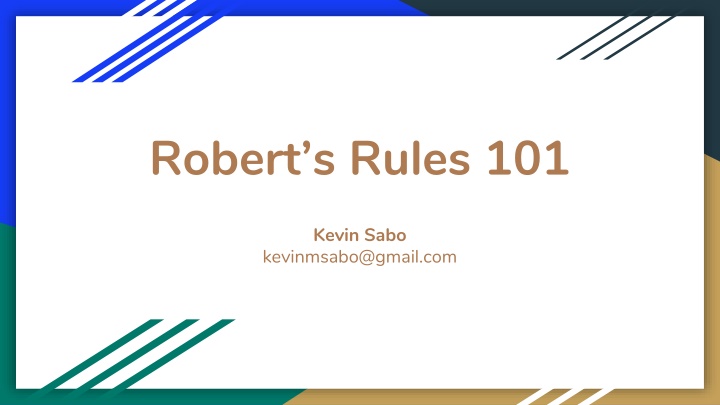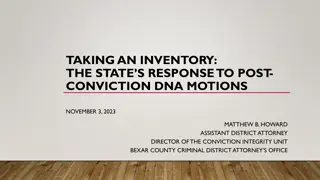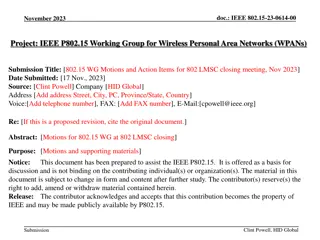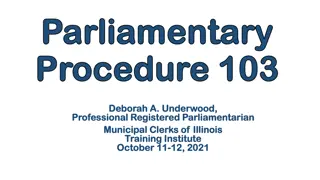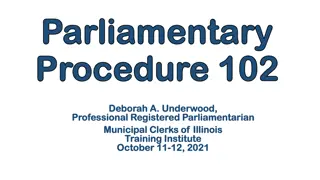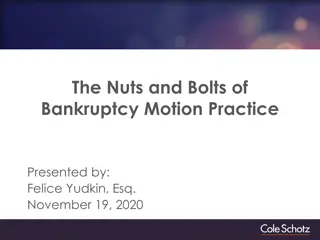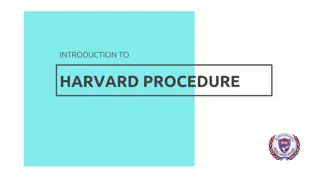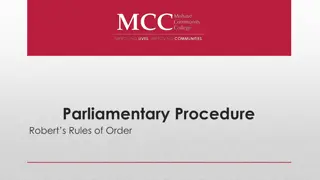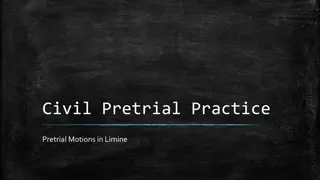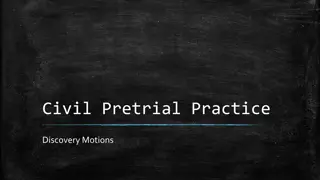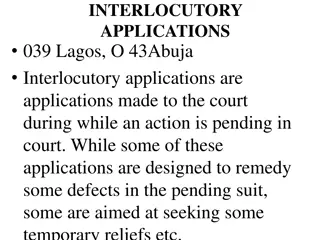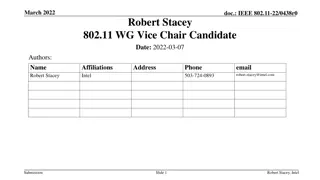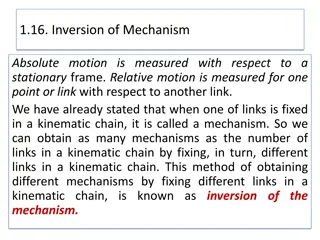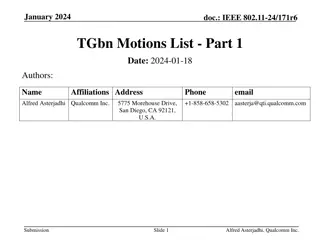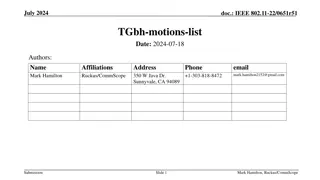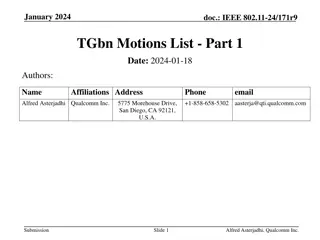Robert's Rules: Basics and Improvement of Motions
Robert's Rules of Order is a crucial guide in parliamentary procedures, essential for various organizations. Learn about the basic structure of motions, amending motions for improvement, and techniques to keep business on track. Enhance your understanding of efficient decision-making processes within group settings.
Download Presentation

Please find below an Image/Link to download the presentation.
The content on the website is provided AS IS for your information and personal use only. It may not be sold, licensed, or shared on other websites without obtaining consent from the author.If you encounter any issues during the download, it is possible that the publisher has removed the file from their server.
You are allowed to download the files provided on this website for personal or commercial use, subject to the condition that they are used lawfully. All files are the property of their respective owners.
The content on the website is provided AS IS for your information and personal use only. It may not be sold, licensed, or shared on other websites without obtaining consent from the author.
E N D
Presentation Transcript
Roberts Rules 101 Kevin Sabo kevinmsabo@gmail.com
What do you already know about Robert s Rules? What information do you think you need?
Wait, whos Robert? Written by Brigadier General Henry Robert, Chief Engineer of the Army First printed in 1876, now 11thedition Most commonly-used parliamentary authority in US Used by county commissions, nonprofits, homeowner associations, professional societies, school boards, trade unions, and church groups Practice makes perfect Majority-minority balance
Basic Structure of a Motion 1. You wait to be recognized by the Chair 2. You make your motion 3. Another member seconds your motion if a second is required 4. Chair restates the motion 5. Chair opens discussion if motion is debatable 6. Chair calls for a vote after discussion closes 7. Chair announces the result
I think this motion can be improved.
Amending Motions If there s a motion that you want to make better, you can move to amend it It s helpful to limit amendments to striking and/or inserting new words (instead of replacing entire motions with new ones)
Alright. Lets move this along.
Getting Business Back on Track If it seems like things aren t sticking to the agenda, you have two options: If the discussion doesn t pertain to the agenda item, you can call for the orders of the day If you think the discussion has become repetitive and there s a motion before the council, you can call for a vote (move the previous question)
This needs another look before we take action.
Postponing and Referring If you don t think the council is ready to vote on something, you have two options: You can postpone the item to another time OR You can refer the item to another entity for review and a report back
Humans need bio breaks.
Putting Business on Hold If you think the council needs a break: You can move to recess for a certain amount of time If you want to end the meeting: You can move to adjourn
I think we need to revisit a previous item.
Revisiting Past Items If there s a motion you want to revisit, you can move to reconsider it You had to have been on the winning side If the motion passed, you had to have voted for it If the motion died, you had to have voted against it A majority has to agree to revisit the item first
Is it ever okay to interrupt the speaker?
You should avoid interrupting the current speaker, but in these instances it can be appropriate: Asking a request for information if you feel you need more before casting a vote on an item Asking a point of parliamentary inquiry if you need clarification on the council s rules Raising a point of personal privilege if something is interfering with your participation (such as temperature, noise, etc.) Raising a point of order if you feel the rules are being violated
